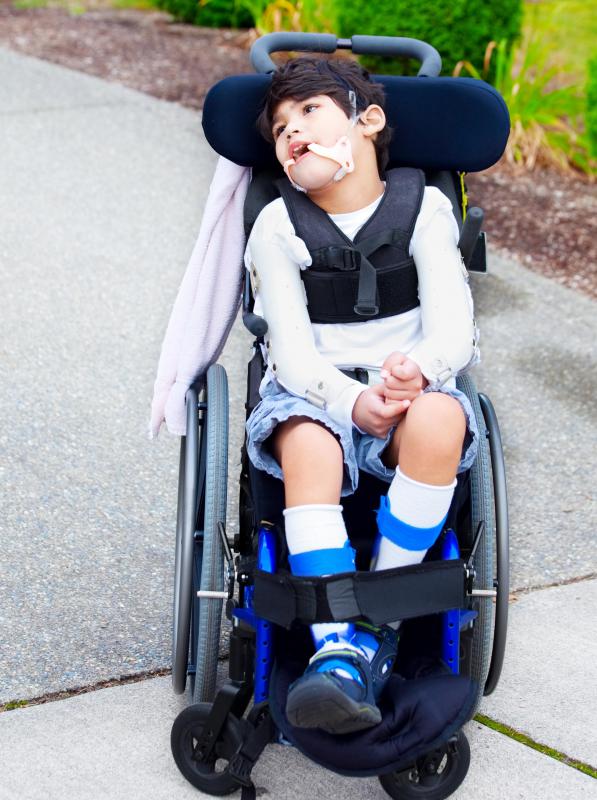At TheHealthBoard, we're committed to delivering accurate, trustworthy information. Our expert-authored content is rigorously fact-checked and sourced from credible authorities. Discover how we uphold the highest standards in providing you with reliable knowledge.
What is Spastic Diplegic Cerebral Palsy?
Spastic diplegic cerebral palsy is a lifelong neurological disorder that is usually present at birth. It is characterized by stiff muscles and uncontrollable contractions that are severest in two of the extremities, almost always the legs. Most cases are the result of brain damage that occurs in the womb, though doctors cannot always pinpoint an underlying cause. The severity of spastic diplegic cerebral palsy can vary from patient to patient, but many people with the disorder are able to live independently with the aid of crutches, leg braces, or wheelchairs.
A fetus can develop spastic diplegic cerebral palsy if the brain's development is impeded. Bacterial and viral infections, genetic defects, oxygen deficiencies, and an injury to an expecting mother's abdomen can damage an unborn infant's brain. Occasionally, spastic diplegic cerebral palsy can develop after birth in the first two years of life following a serious head injury. It is clear that neural damage is responsible for the condition, but it is often difficult for specialists to identify the precise area of damaged brain tissue and predict the resulting symptoms.

The most common physical sign of spastic diplegic cerebral palsy in an infant is straight, stiff legs. The knee and hip joints may be so stiff that the legs cannot be bent without considerable force. A baby's legs may tremor or contract suddenly and uncontrollably. Muscles in his or her arms, neck, and face may also twitch or appear stiff, but problems are usually most severe and noticeable in the legs. As a child gets older, he or she is likely to have difficulties standing and walking. Some patients suffer mental retardation as well as physical disabilities.

Doctors can usually diagnose spastic diplegic cerebral palsy by simply evaluating physical symptoms, though patients generally need to undergo a series of specialized tests to identify other problems. Magnetic resonance imaging tests, x-rays, and electroencephalograms help doctors to determine the severity of brain damage. An infant may also be scheduled for hearing and vision tests to make sure that senses are intact. Unless damage to the brain or other internal organs is found, treatment may not be necessary right away.

Most young patients with mild forms of spastic diplegic cerebral palsy are able to control most of their symptoms with anticonvulsant medications and pain relievers. Surgery is rarely advised to try to correct leg problems, and most children learn to support themselves with the aid of crutches or braces. As patients get older, they may need to attend physical therapy sessions to strengthen their legs and learn how to remain mobile.
AS FEATURED ON:
AS FEATURED ON:















Discuss this Article
Post your comments